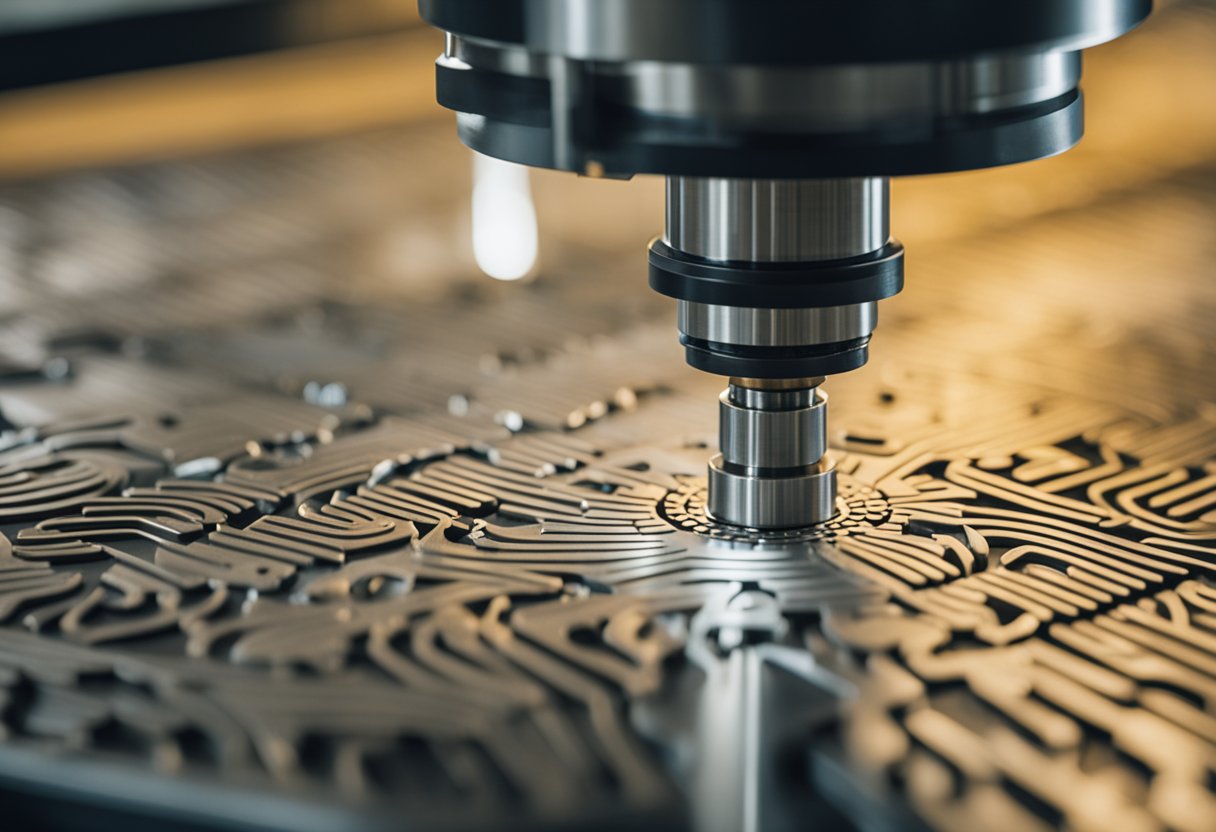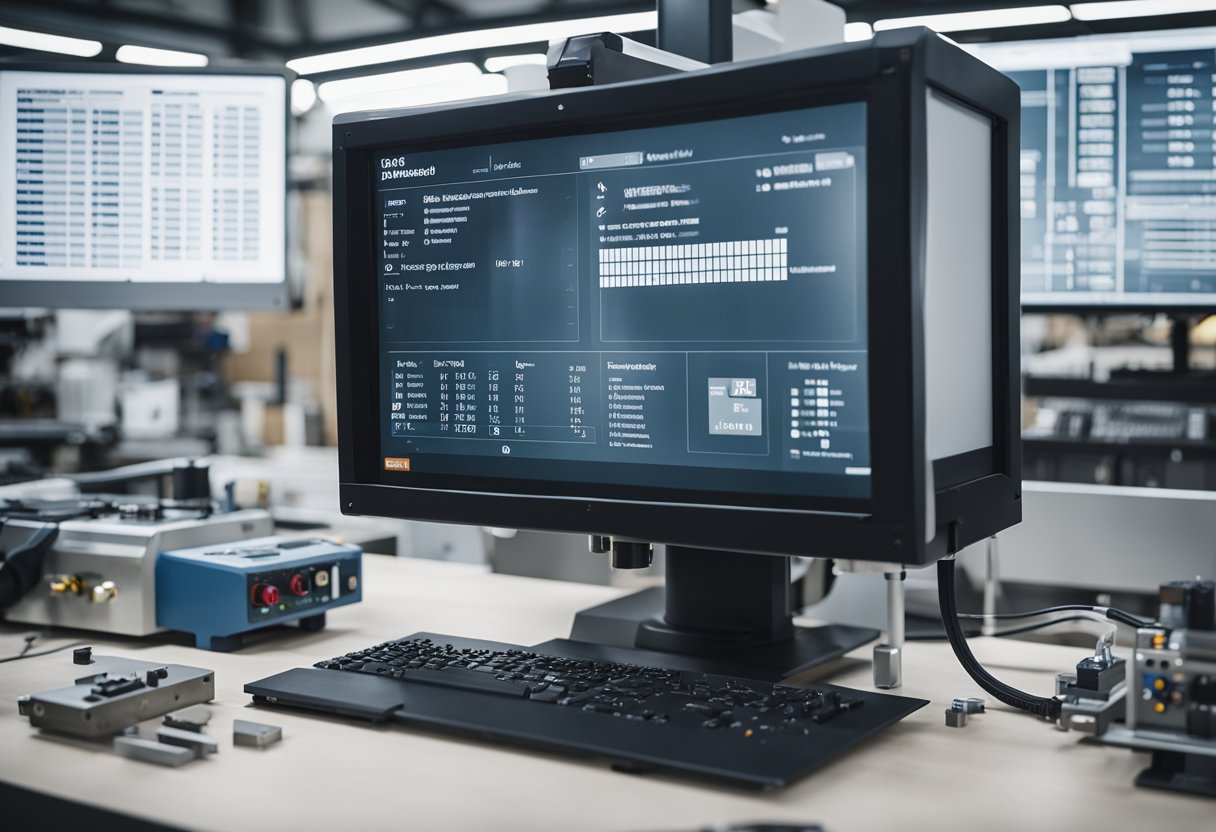CNC Machine: A Comprehensive Guide to Computer Numerical Control Machines
Computer Numerical Control (CNC) machines have revolutionized the manufacturing industry by providing a level of precision and efficiency that was previously unattainable. CNC machines are automated tools that are programmed to perform specific tasks with great accuracy. These machines are used in a wide range of industries, including aerospace, automotive, and medical device manufacturing.

CNC machines rely on computer-aided design (CAD) software to generate the instructions that control their movements. The CAD software is used to create a digital model of the part that needs to be manufactured. The software then generates the tool path, which is a set of instructions that tells the machine how to move its cutting tools to create the desired shape. The tool path is then sent to the CNC machine, which uses its computerized controls to execute the instructions and create the part.
CNC machines come in many different sizes and configurations, from small desktop machines to large industrial machines that can take up an entire factory floor. They can be used to create a wide range of parts, from simple shapes to complex geometries. CNC machines have greatly increased the efficiency and accuracy of manufacturing processes, making it possible to produce high-quality parts at a lower cost.
Fundamentals of CNC Machining
CNC machining is a manufacturing process that involves the use of computer-controlled machines to produce complex parts and components. This process has revolutionized the manufacturing industry by increasing production efficiency and reducing human error. In this section, we will discuss the fundamentals of CNC machining, including the types of machines, basic components, and machine axes.
Types of CNC Machines
There are several types of CNC machines, each designed for a specific application. Some of the most common types include CNC milling machines, CNC routers, and CNC lathes. CNC milling machines are used to produce complex parts by removing material from a workpiece using rotary cutters. CNC routers, on the other hand, are used to cut and shape materials such as wood, plastic, and metal. CNC lathes are used to produce cylindrical parts by rotating the workpiece against a cutting tool.
Basic CNC Machine Components
CNC machines consist of several basic components, including the spindle, tool holder, cutting tool, and worktable. The spindle is the rotating component that holds the cutting tool. The tool holder is used to secure the cutting tool to the spindle. The cutting tool is used to remove material from the workpiece, and the worktable is used to hold the workpiece in place.
CNC Machine Axes
CNC machines operate on multiple axes, which allow for precise control of the cutting tool. The most common CNC machine axes are the X, Y, and Z axes. The X-axis moves the cutting tool horizontally, the Y-axis moves it vertically, and the Z-axis moves it in and out of the workpiece. Some CNC machines also have additional axes, such as the A and B axes, which allow for more complex movements.
In conclusion, CNC machining is a complex process that requires specialized machines and components. By understanding the fundamentals of CNC machining, manufacturers can produce high-quality parts and components with greater efficiency and accuracy.
CNC Programming and Operation

Understanding CNC Programming
CNC programming is the process of creating instructions that control the movements of a CNC machine. These instructions are written in a language called G-code, which is a standardized language used in the CNC industry. The G-code program tells the machine what to do, where to move, and how fast to move.
The G-code program is created using a text editor or a specialized software program that generates the code automatically. The programmer must have a good understanding of the machine's capabilities and limitations to create an effective program.
The Role of CAD and CAM
Computer-aided design (CAD) and computer-aided manufacturing (CAM) are essential tools in the CNC programming process. CAD software is used to create a 3D model of the part that is to be machined. CAM software takes the 3D model and generates the G-code program that will be used to machine the part.
CAD and CAM software can also simulate the machining process, allowing the programmer to identify potential problems before the program is run on the machine. This can save time and reduce the risk of damaging the machine or the part being machined.
CNC Machine Controls
CNC machines are controlled by a computer that receives the G-code program and translates it into machine movements. The computer sends signals to the machine's motors, which move the machine's axes according to the program.
Most CNC machines use a control system made by a company called Fanuc. Fanuc controls are known for their reliability and ease of use. The operator interacts with the machine using a control panel that displays information about the program and the machine's status.
In conclusion, CNC programming and operation require a deep understanding of G-code, CAD, CAM, and machine controls. With the right knowledge and tools, programmers can create accurate and efficient programs that produce high-quality parts.
Materials and Tools for CNC
Material Compatibility
When it comes to CNC machining, the choice of material is crucial. The machine's ability to handle a specific material depends on the type of machine, tooling, and cutting equipment used. CNC machines can work with a wide range of materials, including metal, wood, plastic, glass, and foam. However, each material requires a specific approach and tooling.
Metals are the most common materials used in CNC machining. They are strong and durable, making them ideal for producing parts that require high strength and durability. Aluminum, brass, and steel are popular metals used in CNC machining. However, machining harder metals such as titanium and stainless steel requires specialized tooling and cutting equipment.
Plastics are also popular materials used in CNC machining. They are lightweight and easy to work with, making them ideal for creating complex shapes and designs. Acrylic, polycarbonate, and nylon are common plastics used in CNC machining. However, machining harder plastics such as PEEK and Ultem requires specialized tooling and cutting equipment.
Wood is another popular material used in CNC machining. It is easy to work with and has a natural aesthetic, making it ideal for creating furniture, decorative items, and architectural models. However, machining harder woods such as oak and maple requires specialized tooling and cutting equipment.
Glass and foam are less common materials used in CNC machining. Glass requires specialized tooling and cutting equipment due to its brittle nature. Foam, on the other hand, is easy to work with and is commonly used in prototyping and creating molds.
Tooling and Cutting Equipment
The choice of tooling and cutting equipment is critical in CNC machining. The right tools and equipment can improve efficiency and accuracy while reducing production time and costs. There are various types of cutting tools used in CNC machining, including end mills, drills, and reamers.
End mills are the most common cutting tools used in CNC machining. They come in various shapes and sizes and are used to create slots, pockets, and contours. Drills are used to create holes in the material, while reamers are used to smooth out holes and improve accuracy.
The choice of cutting equipment depends on the material being machined. For example, machining metal requires high-speed cutting equipment that can withstand high temperatures and pressures. Machining plastics, on the other hand, requires low-speed cutting equipment to prevent melting and deformation.
In conclusion, CNC machining requires careful consideration of the material and tooling used. The right combination of material, tooling, and cutting equipment can improve efficiency and accuracy while reducing production time and costs.
Precision and Accuracy in CNC Machining

CNC machining is known for its ability to produce highly precise and accurate parts. Achieving this level of precision and accuracy requires a combination of factors, including the machine's capabilities and the operator's skill.
Achieving High Precision
Precision in CNC machining refers to the degree of consistency between the actual dimensions of a part and its intended dimensions. This is typically measured in terms of tolerances, which are the allowable deviations from the intended dimensions.
To achieve high precision, CNC machines must be capable of making very small and precise movements. This requires a high level of rigidity and stability in the machine's structure, as well as precise control over its movements.
In addition to the machine's capabilities, achieving high precision also requires careful planning and programming. The operator must carefully consider the part's geometries and the machining steps required to produce it. This includes selecting the appropriate cutting tools, speeds, and feeds, as well as optimizing the cutting paths to minimize tool deflection and maximize accuracy.
Maintaining Accuracy
Accuracy in CNC machining refers to the degree of conformity between the actual dimensions of a part and its intended dimensions. This is typically measured in terms of the difference between the actual dimensions and the intended dimensions.
Maintaining accuracy requires careful calibration and maintenance of the machine. This includes regular checks of the machine's positioning accuracy and compensation for any deviations. It also requires careful monitoring of the cutting tools and regular replacement when necessary.
In addition to machine maintenance, maintaining accuracy also requires careful attention to the machining process itself. This includes ensuring that the workpiece is properly secured and aligned, and that the cutting tools are properly engaged with the material.
Overall, achieving high precision and maintaining accuracy in CNC machining requires a combination of factors, including the machine's capabilities, the operator's skill, and careful planning and programming. By carefully considering these factors and taking the necessary steps to optimize the machining process, CNC machines can produce parts with exceptional precision and accuracy.
Frequently Asked Questions

How does a CNC machine function?
CNC stands for Computer Numerical Control. A CNC machine functions by receiving instructions from a computer program that controls the movement of the machine's cutting tools. The program tells the machine precisely where to move and how fast to move, allowing for extremely precise and accurate cuts.
What materials can be processed with a CNC machine?
CNC machines can process a wide variety of materials, including metals, plastics, wood, and composites. The specific materials that can be processed depend on the type of CNC machine and the cutting tools used.
What is the typical cost range for CNC machines?
The cost of a CNC machine can vary widely depending on the type and size of the machine, as well as its capabilities. Small desktop CNC machines can cost as little as a few hundred dollars, while large industrial CNC machines can cost hundreds of thousands of dollars.
What skills are required to operate a CNC machine effectively?
Effective operation of a CNC machine requires a combination of technical skills and knowledge. Operators must be able to read technical drawings and use computer programs to create and modify cutting paths. They must also have a strong understanding of the materials being processed and the cutting tools being used.
What is the average salary range for a CNC machine operator?
The average salary for a CNC machine operator can vary depending on factors such as experience, location, and industry. According to data from the Bureau of Labor Statistics, the median annual wage for CNC machine operators was $44,190 as of May 2020.
How long does it typically take to learn CNC machining?
The amount of time it takes to learn CNC machining can vary depending on the individual and the specific skills being learned. Some people may be able to learn the basics of CNC machining in a matter of weeks, while others may require several months or more to become proficient. Ongoing training and education are typically required to stay current with the latest advancements in CNC technology.
